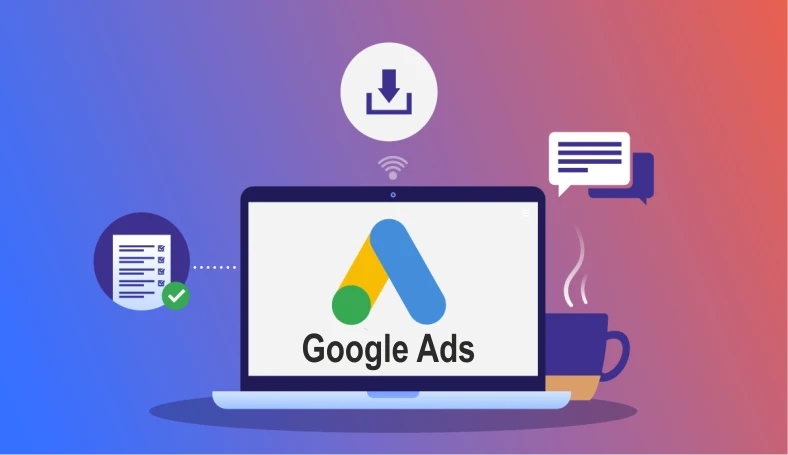In today’s highly competitive digital landscape, Google Ads brand campaigns have become essential to any successful marketing strategy. As online consumer behavior continues to evolve, the importance of efficiently targeting and engaging with your brand’s audience cannot be overstated.
Recent statistics reveal that businesses investing in brand campaigns witness a 31% increase in brand awareness and a significant boost in website visits, leading to a 48% rise in overall conversions. You must also avoid making 5 mistakes while setting up ads. However, optimizing your brand campaigns for efficiency is paramount to capitalize on these opportunities.

Set a clear objective.
Setting a clear objective is the foundation of making your Google Ads brand campaigns more efficient. Define a specific and measurable goal that aligns with your overall marketing objectives. Your objective could be to increase brand awareness, drive more website traffic, boost conversions, or improve brand engagement.
A clear objective will help you focus your efforts, tailor your ad content, and optimize your campaign settings to achieve the desired outcome. With a well-defined objective, you can measure the success of your brand campaigns accurately and make data-driven decisions to improve their efficiency continuously. There are benefits of using Google AdWords for your business that will help to boost your online visibility and traffic.
Build a great structure.
Building a great structure is essential for optimizing the efficiency of your Google Ads brand campaigns. You can create a well-organized and effective campaign structure in the following ways:
- Campaign Segmentation: Divide your brand campaigns into separate ad groups based on specific themes or product categories. This segmentation allows you to tailor ad content and targeting for better relevance.
- Keyword Grouping: Organize keywords within each ad group into tightly related groups. This grouping ensures your ads are triggered for highly relevant search queries, improving ad performance and click-through rates.
- Ad Copy Relevance: Create ad copy that aligns closely with the targeted keywords and search intent. Tailor your messaging to showcase your brand’s unique value proposition and encourage users to click through to your website.
- Ad Extensions: Utilize various ad extensions, such as site links, callouts, and structured snippets, to provide additional information and make your ads more compelling. Extensions increase ad real estate and can boost CTRs.
- Landing Page Alignment: Direct users to landing pages that match their search intent and provide relevant information. Aligning ad copy with landing page content ensures a seamless user experience and increases the likelihood of conversions.
Rack up a high-quality score.
Racking up a high-quality score is crucial for boosting the efficiency of your Google Ads brand campaigns. The quality score is a metric that Google uses to assess the relevance and quality of your ads, keywords, and landing pages. A high-quality score indicates that your ads are highly relevant to users, which can lead to lower costs and better ad positions.
Target long-tail keywords
Targeting long-tail keywords is a powerful strategy to boost the efficiency of your Google Ads brand campaigns. They are more specific and have lower search volumes than generic keywords. However, they are highly targeted and often have higher intent, leading to better conversion rates. If you target long-tail keywords, it can help your business in the following ways:
- Less Competition: Long-tail keywords have less competition, making achieving higher ad positions and lower cost-per-click (CPC) easier.
- Higher Relevance: Long-tail keywords match user search queries more precisely, increasing ad relevance and a higher quality score.
- Niche Targeting: Long-tail keywords allow you to target specific niches and cater to the unique needs of your audience, improving your campaign’s overall performance.
- Lower Costs: Since long-tail keywords have lower search volumes, they often have lower CPCs, providing a cost-effective way to drive qualified traffic to your website.
Use Automation
Automation has become an indispensable tool for enhancing the efficiency and effectiveness of Google Ads campaigns. By leveraging automation features and tools, marketers can streamline tasks, optimize bidding strategies, and deliver highly relevant ad experiences to their target audience.
Automated bidding options, such as Target CPA and Target ROAS, ensure that bids are optimized to achieve specific campaign objectives, maximizing the return on ad spend.
Smart extensions and responsive search ads further enhance ad relevance and visibility. Embracing automation empowers marketers to focus on strategic decisions while letting technology handle repetitive tasks, freeing up valuable campaign optimization and growth time.
Confused about how to increase the efficiency of your Google Ads? Contact us.
Feeling unsure about maximizing the efficiency of your Google Ads? Contact our expert team of My SEO Guru today to supercharge your ad campaigns, boost your brand’s online visibility, and drive more qualified traffic.
Our tailored strategies and data-driven approach will ensure you get the most out of your Google Ads investment. Schedule a consultation now and take your online presence to new heights by calling 215-826-3437.



